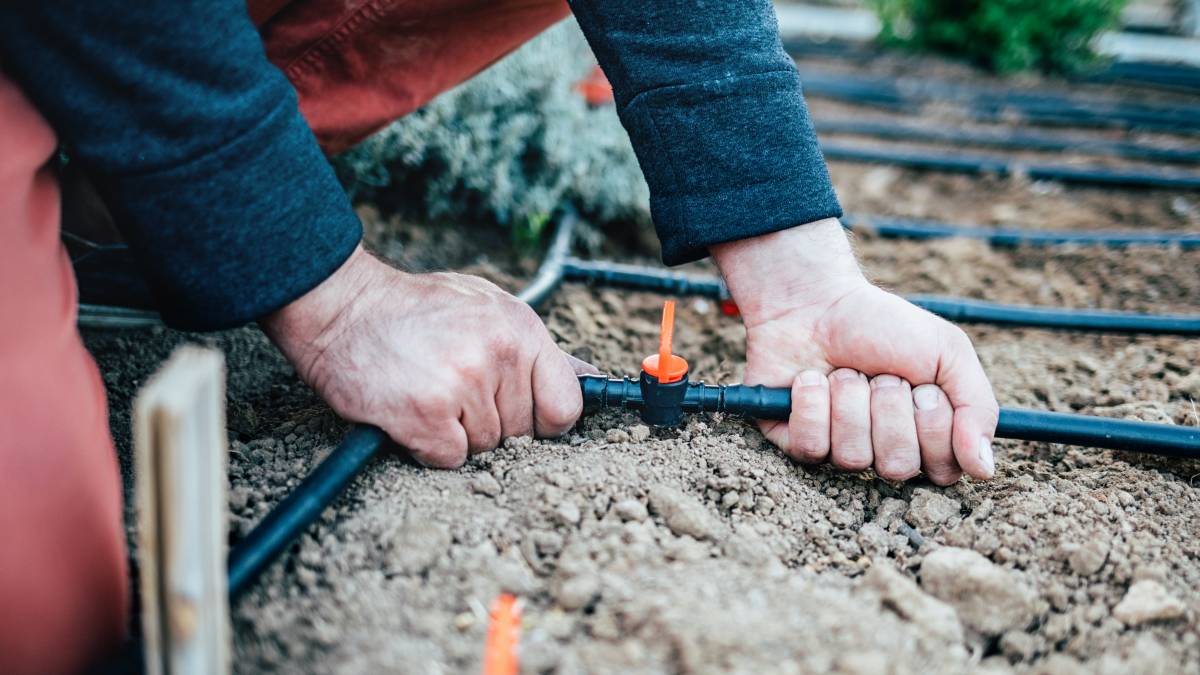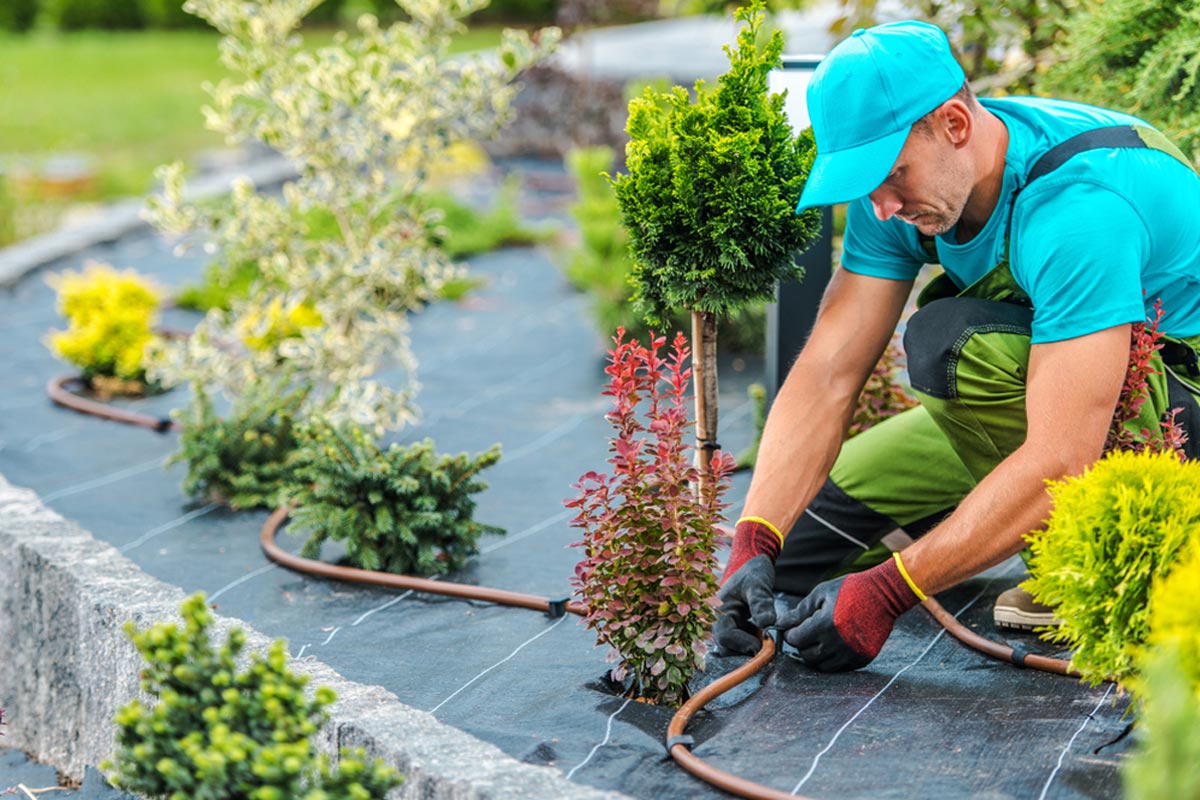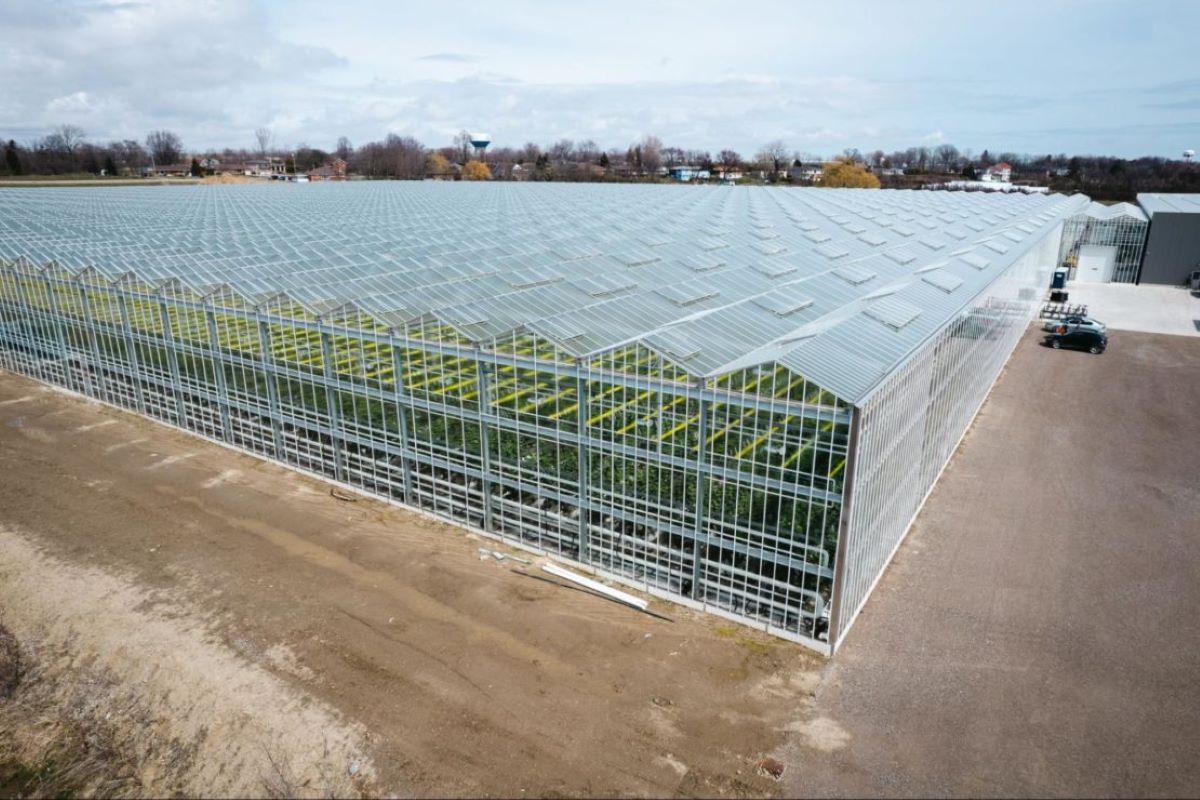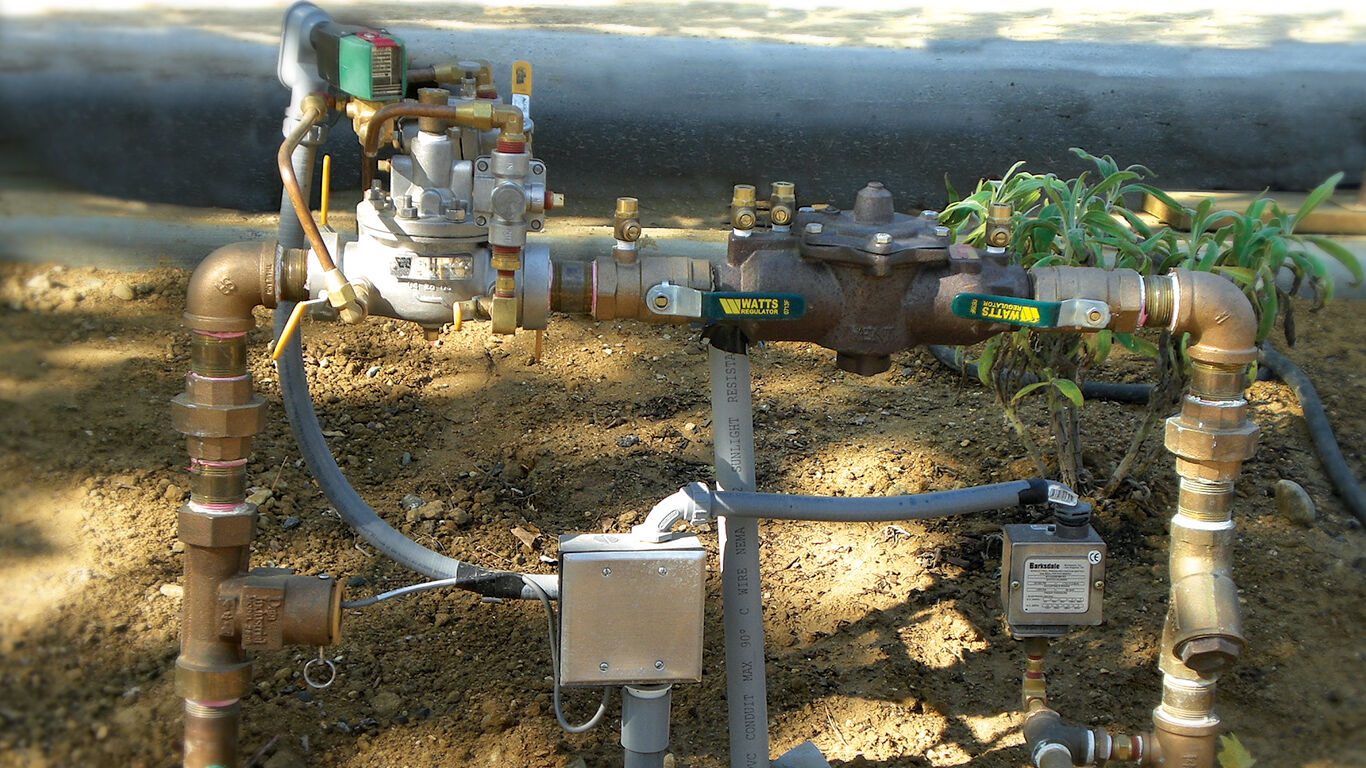Home>Gardening Basics>Getting Started>How Much Cost To Install Irrigation System


Getting Started
How Much Cost To Install Irrigation System
Modified: January 22, 2024
Find out how much it costs to install an irrigation system. Getting started is easy and affordable with our professional services.
(Many of the links in this article redirect to a specific reviewed product. Your purchase of these products through affiliate links helps to generate commission for Chicagolandgardening.com, at no extra cost. Learn more)
Table of Contents
Introduction
Installing an irrigation system can significantly improve the health and beauty of your garden or landscaping. However, many homeowners are hesitant to pursue this option due to concerns about the cost involved. While the cost of installing an irrigation system can vary depending on various factors, it is important to understand that the benefits it brings far outweigh the initial investment.
An irrigation system is designed to deliver water to your plants at regular intervals, ensuring they receive the right amount of moisture for optimal growth. This not only saves you time and effort but also helps conserve water by eliminating wastage. Additionally, a well-maintained irrigation system can help prevent overwatering, which can be detrimental to the health of your plants.
Before diving into the cost considerations, it’s essential to assess your specific needs and goals. Factors such as the size of your property, the types of plants you have, and your local climate will play a significant role in determining the type and cost of the irrigation system that best suits your needs.
In this article, we will explore the various factors that can affect the cost of installing an irrigation system. We will also discuss the different types of irrigation systems available and their respective costs. Additionally, we will highlight some additional expenses to consider and provide tips for reducing installation costs. By the end, you’ll have a clearer understanding of the investment required and be better equipped to make an informed decision.
Factors Affecting the Cost of Installing an Irrigation System
Several factors can influence the cost of installing an irrigation system. Understanding these factors will help you estimate the overall cost and make informed decisions. Here are the key factors to consider:
- Property Size: The size of your property is a significant factor in determining the cost of installing an irrigation system. Larger properties require more materials, labor, and equipment, which will contribute to a higher overall cost.
- System Complexity: The complexity of the irrigation system you choose will also impact the cost. A basic system with a few sprinkler heads will be more affordable compared to a more intricate system with multiple zones, drip irrigation, or smart controllers.
- Type of System: There are different types of irrigation systems available, each with its own cost considerations. For example, a traditional sprinkler system is generally more affordable than a drip irrigation system, which is often more water-efficient but may be costlier upfront.
- Local Labor Costs: The cost of labor can vary depending on your location. Higher labor costs in your area will contribute to a higher overall installation cost. It’s important to consider this factor when budgeting for your irrigation system.
- Permits and Regulations: Some areas may require permits for installing an irrigation system. These permits usually come with a fee, which should be factored into your overall cost estimate. Additionally, certain regulations may dictate the type of irrigation system you can install, potentially impacting the cost.
- Equipment Quality: The quality of the irrigation equipment you choose will also affect the cost. Higher-quality materials and components may be more expensive upfront but can contribute to the longevity and efficiency of your system in the long run.
Keep in mind that these factors are interconnected and can vary depending on your specific circumstances. It’s important to consult with a professional irrigation specialist to assess your needs and determine the most suitable and cost-effective solution for your property.
Types of Irrigation Systems
When considering the installation of an irrigation system, it’s essential to understand the different types available. Each type has its own advantages, costs, and conditions where it best performs. Here are some of the common types of irrigation systems:
- Sprinkler Systems: Sprinkler systems are the most widely used type of irrigation system. They feature underground pipes connected to sprinkler heads that distribute water in a circular or fan-shaped pattern. Sprinkler systems are versatile and suitable for a variety of landscapes, making them a popular choice for residential and commercial properties.
- Drip Irrigation Systems: Drip irrigation systems deliver water directly to the root zone of plants in a slow and controlled manner. This system uses a network of tubes or emitters placed near the plants, minimizing water waste through evaporation or runoff. Drip irrigation is highly efficient and ideal for areas with water restrictions or where water conservation is a priority.
- Micro-Spray Systems: Micro-spray systems are similar to sprinkler systems but use smaller spray heads that release water in a fine mist or gentle spray. They are commonly used in smaller gardens or areas with delicate plants that require a softer watering method.
- Subsurface Irrigation Systems: Subsurface irrigation systems deliver water directly to the root zone underground. This system utilizes porous pipes or underground drippers to provide a consistent water supply to the plants. Subsurface irrigation is more efficient and reduces water loss through evaporation or wind.
- Smart Irrigation Systems: Smart irrigation systems incorporate advanced technology and sensors to optimize water usage. These systems monitor weather conditions, soil moisture levels, and plant water requirements to adjust watering schedules accordingly. Smart irrigation systems help conserve water and can be controlled remotely through a smartphone or computer.
The selection of the right irrigation system for your property depends on various factors such as the type of plants, soil conditions, climate, and water availability. Consulting with a professional irrigation specialist will ensure you choose the most suitable system for your specific needs.
Cost of Different Types of Irrigation Systems
The cost of installing an irrigation system can vary depending on the type of system you choose. Each type of system has its own upfront costs and long-term maintenance considerations. Here is a breakdown of the average cost range for different types of irrigation systems:
- Sprinkler Systems: On average, the cost of installing a sprinkler system ranges from $1,500 to $4,000 for a typical residential property. Factors such as the size of the property, number of zones, and type of sprinkler heads used can influence the overall cost.
- Drip Irrigation Systems: Drip irrigation systems tend to be more expensive upfront due to the specialized equipment and materials required. The average cost for a drip irrigation system ranges from $1,500 to $3,500 for a residential property. However, the long-term water savings and plant health benefits make it a worthwhile investment.
- Micro-Spray Systems: Micro-spray systems are generally more affordable compared to sprinkler or drip irrigation systems. The average cost for a micro-spray system ranges from $1,000 to $2,500 for a residential property.
- Subsurface Irrigation Systems: Subsurface irrigation systems can be slightly more expensive due to the specialized installation process and materials. The average cost for a subsurface irrigation system ranges from $2,000 to $4,500 for a residential property.
- Smart Irrigation Systems: Smart irrigation systems, which utilize advanced technology and sensors, tend to have a higher upfront cost. The average cost for a smart irrigation system ranges from $2,500 to $5,500 for a residential property. However, the water-saving benefits and customization options make it a popular choice for environmentally conscious homeowners.
Keep in mind that these cost ranges are estimates and can vary depending on various factors such as property size, system complexity, local labor costs, and selected equipment quality. It’s crucial to obtain multiple quotes from reputable irrigation professionals to get an accurate assessment of the cost for your specific project.
Additional Costs to Consider
When budgeting for the installation of an irrigation system, it’s important to consider additional costs that may arise. These expenses can vary depending on your specific project and circumstances. Here are some additional costs to keep in mind:
- Permits and Fees: Some jurisdictions may require permits or impose fees for installing irrigation systems. Check with your local municipality to determine if permits are necessary and factor in any associated costs.
- Water Supply Upgrades: If your property’s existing water supply is insufficient to support the irrigation system, you may need to invest in upgrades such as a larger water meter or additional plumbing work. These upgrades can increase the overall cost of the installation.
- Landscaping Modifications: Depending on the type of irrigation system you choose, you may need to make modifications to your landscaping. This can involve removing turf, installing trenches or pipes, or adjusting existing flower beds. Consider the cost of any necessary landscaping changes when budgeting for your irrigation system.
- Maintenance and Repairs: While the initial installation cost is a significant consideration, it’s essential to budget for ongoing maintenance and repairs. Regular maintenance, such as adjusting sprinkler heads or replacing worn-out parts, will help keep your system functioning optimally.
- Energy Costs: Some irrigation systems, such as those with smart controllers, may require electricity to operate. Be sure to factor in any additional energy costs associated with running your irrigation system.
It’s important to consult with a professional irrigation specialist who can assess your specific needs and provide a detailed breakdown of the potential costs involved. They can help you navigate through any unforeseen expenses and ensure your budget is accurate and comprehensive.
DIY vs. Professional Installation: Cost Comparison
When it comes to installing an irrigation system, homeowners often wonder whether they should tackle the project themselves or hire a professional. While DIY installation may seem like a cost-saving option, there are several factors to consider when comparing the costs of DIY versus professional installation:
- Expertise and Knowledge: Professional irrigation installers possess the experience and knowledge to design and install a system that meets your specific needs. They can ensure proper placement of sprinkler heads, optimal water pressure, and efficient water distribution. DIY installations may result in costly mistakes that can impact the functionality of the system and require costly repairs down the line.
- Equipment and Tools: Implementing a proper irrigation system requires specialized equipment and tools. Purchasing or renting this equipment can add to the overall cost of a DIY installation. Professionals come equipped with the necessary tools, saving you from additional expenses.
- Time and Effort: Installing an irrigation system can be a labor-intensive process, especially for larger properties or complex systems. DIY installations often require several weekends or even weeks to complete. Hiring professionals saves you time and effort, allowing you to focus on other tasks or enjoy your free time.
- Warranty and Support: Professional irrigation installers typically offer warranties on their work and can provide ongoing support and maintenance. This means that if any issues arise with your system, you have the assurance of expert assistance without incurring extra costs. DIY installations may lack this level of warranty and support, potentially leaving you responsible for any repairs or adjustments.
- Cost of Mistakes: Mistakes made during a DIY installation can be costly to rectify. Misaligned sprinkler heads, leaks, or improper water distribution can lead to wasted water, increased water bills, and damaged plants or landscape. Professional installers are trained to avoid these mistakes, ultimately saving you money in the long run.
While DIY installation may seem cost-effective initially, it’s important to weigh the potential risks and expenses associated with a poorly executed installation. Hiring a professional ensures a properly functioning and efficient irrigation system, saving you money in the long term.
Tips for Reducing Installation Costs
While installing an irrigation system is an investment, there are several strategies you can employ to help reduce the overall installation costs. Here are some tips to consider:
- Plan and Design: Proper planning and design can help optimize your irrigation system and prevent unnecessary expenses. Consult with a professional irrigation specialist to assess your property’s needs and design a system that maximizes efficiency while minimizing costs.
- Choose the Right System: Selecting the most appropriate irrigation system for your specific needs is crucial. Consider factors such as water availability, plant types, and climate to determine the best system. Avoid overspending on features or components that may not be necessary for your property.
- Do Some of the Work Yourself: While it’s advisable to hire professionals for the more technical aspects of the installation, you can save money by performing some tasks yourself. For example, clearing the work area, trenching, or removing obstacles can help reduce labor costs.
- Group Plants with Similar Water Needs: When planning your landscape, group plants with similar water requirements together. This allows for more efficient watering and reduces the number of separate irrigation zones needed, saving on materials and installation costs.
- Consider Drip Irrigation: Drip irrigation systems are highly efficient and can save water and money in the long run. They deliver water directly to the plants’ root zones, minimizing evaporation and runoff. While the upfront cost may be slightly higher, the long-term water savings make it a cost-effective choice.
- Obtain Multiple Quotes: Seek quotes from several different irrigation installers to compare prices and services. Be sure to consider factors such as experience, reputation, and warranty offered. This allows you to find the best balance between cost and quality.
- Invest in Quality Components: While it may be tempting to opt for cheaper materials and components, investing in high-quality equipment can pay off in the long run. Quality components are more durable, require less maintenance, and can prevent costly repairs or replacements in the future.
By implementing these tips, you can optimize your irrigation system installation while keeping costs under control. Remember, it’s important to strike a balance between cost savings and the long-term functionality and efficiency of your system.
Conclusion
Installing an irrigation system can greatly enhance the health and beauty of your garden or landscaping while saving you time and conserving water. Although the initial cost of installing an irrigation system is an important consideration, the long-term benefits far outweigh the investment. By understanding the factors that affect installation costs, exploring different types of irrigation systems, and considering additional expenses, you can make an informed decision on the most suitable system for your property.
While professional installation may involve higher upfront costs, it offers expertise, warranties, and ongoing support that can help you avoid costly mistakes and ensure the longevity of your system. However, for those with the necessary skills and time, a DIY installation can be a cost-effective option.
To reduce installation costs, proper planning, choosing the right system, and doing some of the work yourself can make a difference. Grouping plants with similar water needs and investing in high-quality components can also help optimize your system’s efficiency and longevity.
Ultimately, the decision to install an irrigation system and how much to invest in it depends on your specific needs, the size of your property, and your budget. Consulting with a professional irrigation specialist can provide valuable guidance and help you navigate through the process while ensuring the best solution for your landscape.
With the right irrigation system in place, you can enjoy lush, healthy plants, a vibrant landscape, and the peace of mind that comes with efficient water usage.










